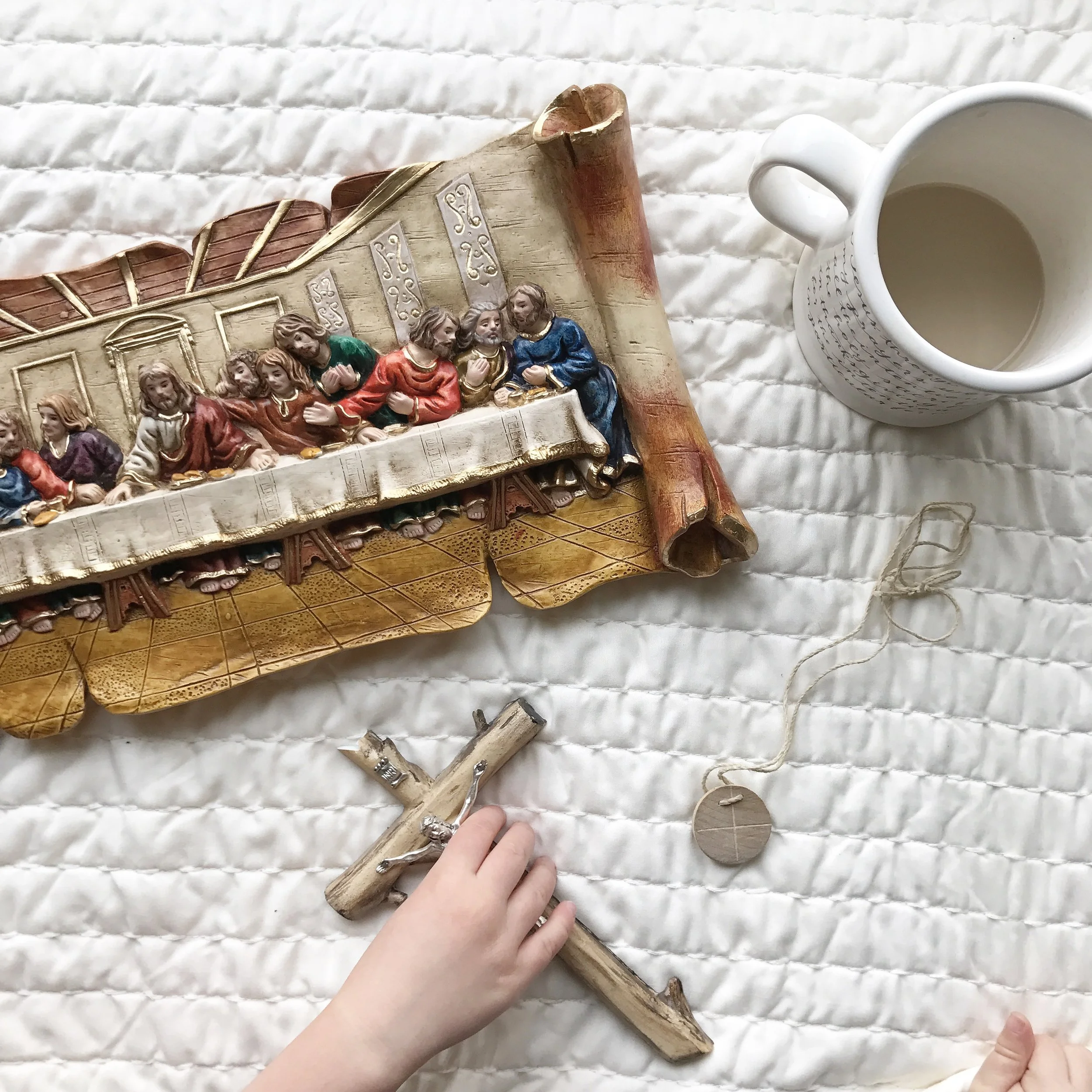Because our community is one inspired by the works and faith of J.R.R. Tolkien, I often receive messages from folks interested in learning more about how Catholicism influenced his worldview and writings. I’ve created this page in hopes that it will be a helpful resource in this regard. I will be occasionally adding to this list as I come across new resources, so please add a comment below if you are aware of any that I’ve missed.
All in Tolkien & Catholicism
Tolkien on The Resurrection as the Greatest Eucatastrophe
“The Resurrection was the greatest ‘eucatastrophe’ possible in the greatest Fairy Story–and produces that essential emotion: Christian joy which produces tears because it is qualitatively so like sorrow, because it comes from those places where Joy and Sorrow are at one, reconciled, as selfishness and altruism are lost in Love.” - JRR Tolkien
Guest Post: 3 Reasons Leaf by Niggle is my Favorite Tolkien Treasure
As a Middle-earth aficionado, I have read J.R.R. Tolkien’s The Hobbit, Lord of the Rings, and The Silmarillion. Currently, I am navigating the land of Beleriand as I am reading The Children of Húrin. While these books are creative and profound, my personal favorite Tolkien work [so far this may be subject to change!] does not take place in a mythic land or through the medium of an epic adventure tale. Instead, a short story published in 1945 wins my personal Pulitzer. Leaf by Niggle does not follow hobbits, elves, dwarves, or contain any sinister evil such as Sauron or Morgoth. Instead, the plots details of a simple painter’s journey in the afterlife.
Make a Habit of the Praises: Tolkien's Prayer Recommendations
The Letters of J.R.R. Tolkien, a compilation of letters written by Tolkien to different members of his family, his friends, editors, colleagues, and fans offers a glimpse into Tolkien’s writing process, his personal life, and in particular — his faith.
Today I wanted to share a passage from one of these letters in which he recommends several prayers to his son Christopher…
Átaremma, Aia María, and Alcar i Ataren: Prayers of the Rosary in Quenya
It comes as no surprise that Tolkien, being both devoted to his Catholic faith and the study of language, found a way to combine his two passions — by translating several prayers into Quenya. Almost enough to pray an entire Rosary if you wanted to.
Book Review: The Messiah Comes to Middle-Earth by Philip Ryken
In The Messiah Comes to Middle-Earth, Philip Ryken reflects on the three-fold offices of Christ as Priest, Prophet, and King as they are echoed in the characters of Gandalf, Frodo (and Sam), and Aragorn in The Lord of the Rings. The book is comprised of three lectures given by Ryken, as well as a response to each lecture.
On this Holy Saturday: Here At the End of All Things (Triduum Series)
Holy Saturday, the still in-between of such great sorrow and the greatest joy, has always been a quiet mystery to me. Jesus is dead, buried in His tomb. His mother is broken hearted, as are his Apostles and friends. A hush has fallen upon the earliest of Christians, one that they may perceive as the end of all things. And even still today, we might fall into despair.
On This Good Friday: "I Thirst" (Triduum Series)
Tolkien's profound love for Our Lord is nestled in nearly everything he wrote. And today as we remember Christ's Crucifixion, this simple reflection of Christ in Frodo's "I'm thirsty, Sam" guided me down such a beautiful path to Christ that I couldn't help but share it with you.
At Home in Middle-Earth: The Heroism of Life-Saving Hospitality
To the man who wrote of quaint hobbit-holes and grand kingdom halls, friendship and hospitality were valued in a heroic sense. He is often quoted, “If more of us valued food and cheer and song above hoarded gold, it would be a merrier world.” And oh, how true it is.
The Ring & The Cross: Why March 25th is The Most Important Date of all History
Tolkien created Middle-earth with painstaking detail and wove importance and meaning into nearly every page of The Lord of the Rings — and the dates of important events are no exception. Chiefly, March 25th marks the date when the One Ring was destroyed in the fires of Mount Doom. Being the most important event of The Lord of the Rings, this date is sure to hold some significance, don’t you suppose?









